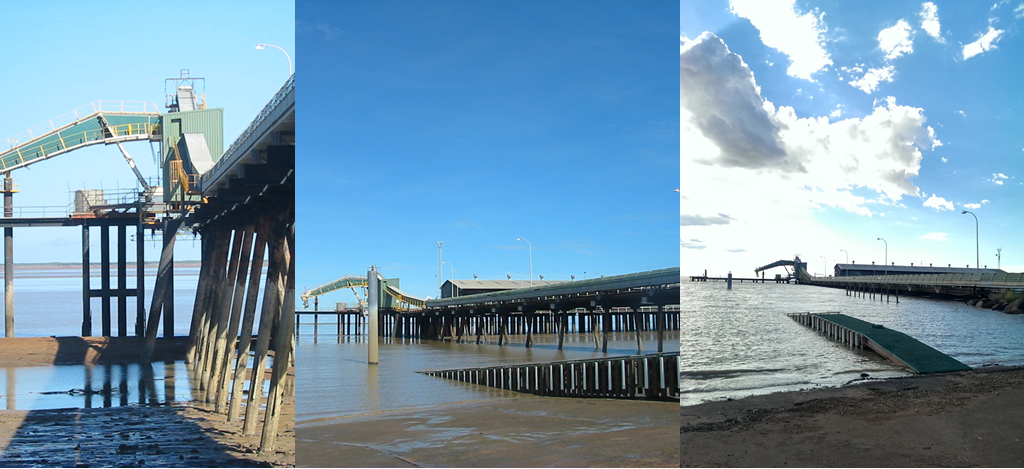Tides are the periodic rise and fall of sea level resulting from the gravitational interaction and motion of the Sun, Moon and Earth acting on ocean waters. Tidal patterns are modified by other influences such as the shape and depth of oceans and the weather.
In the northern part of WA the tides at most locations (including Derby) are semidiurnal (two highs and two lows in each 24 hour rotation of the earth). The combination of factors is complex and causes local tides to vary greatly from one site to another. Derby has Australia’s highest tides and one of the highest in the world. The Bay of Fundy Nova Scotia, Canada, has 15m tides.
Other high tides occur at Bristol (UK) 14.6m, Mont Saint Michel (France) 12.3m, Puerto Gallegos (Argentina) 13.2m and Bhaunagan (India) 12.2m.
Storm conditions can cause higher tide levels than predicted. Tides can be predicted with a high degree of accuracy from analysis of long term tide records. The tide predictions provide
the time and height of high and low water for a particular day at a particular place.
Spring tides occur every 14 days at the new and full moons. Neap tides occur every 14 days at the halfmoon. Tide charts are available from the Derby Visitor Centre.
HIGHEST TIDES FOR 2018
High Tide Wednesday, 18th April 3.35pm = 11.78 metres
Low Tide Friday, 12th October 10:27am = 0.31 metre
CHART DATUM
The Chart Datum found on navigational charts is the lowest predictable level to which the tide is likely to fall. It is the approximate lowest low water. All soundings on a navigational chart are referenced to Chart Datum. To calculate the total depth of water, you must add the depth obtained on the chart to the tide height at that time and place.
Tide information is important for safe navigation in ports and coastal waters. Predicted Tide Charts for Derby are available at the Derby Visitor Centre.
Much of the information above was courtesy of Transport WA Coastal Management Branch Tides and Waves Section.
For the Latest Derby Tide information please head to the Bureau of Meteorology Website

